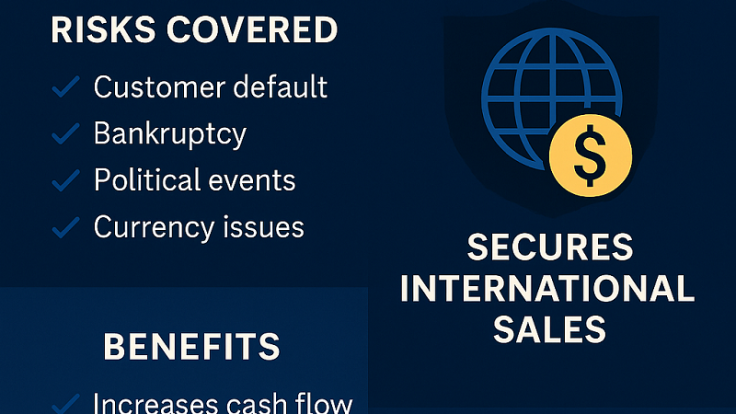
Export credit insurance is a risk management tool that protects exporters from the risk of non-payment by foreign buyers. It ensures that exporters receive payment for goods and services even if the buyer defaults due to political or commercial risks.
📦 Export Trade Credit Insurance
Export trade credit insurance is designed specifically for businesses involved in international trade. It covers receivables due from foreign customers, enabling exporters to offer open account terms without fearing payment loss.
💳 Export Credit Insurance vs. Letter of Credit
While a letter of credit (LC) guarantees payment through a bank, export credit insurance provides broader coverage against buyer insolvency or political events. LCs can be more costly and complex, while credit insurance offers flexible protection across multiple clients.
✅ Which Statement is True of Export Credit Insurance?
- ✅ It covers both commercial (buyer insolvency, default) and political (war, government intervention) risks.
- ❌ It replaces the need for due diligence — false. Exporters still need to assess buyer risk.
🛡️ Trade Credit Insurance Protects Exporters Against the Risk of:
- Non-payment from buyers
- Bankruptcy or insolvency of the importer
- Political unrest, sanctions, or currency restrictions in the buyer’s country
- Delayed payments due to foreign exchange issues
⚖️ Export Credit Insurance: Advantages and Disadvantages
Advantages:
✔ Protects cash flow
✔ Enables safer expansion into new markets
✔ Increases access to working capital through secured receivables
Disadvantages:
✖ Costs may be high for SMEs
✖ Not all risks or clients are insurable
✖ Claims can be time-consuming
🤔 Why Export Credit Insurance is Necessary
Without export credit insurance, companies risk severe financial losses from unpaid invoices. Especially in emerging markets, political instability or buyer unreliability can threaten business survival. Insurance provides confidence and financial stability.
📄 Export Credit Insurance Coverage
Coverage typically includes:
- Up to 90% of the invoice value
- Short-term (up to 180 days) or medium-term protection
- Coverage for multiple buyers or a specific contract
🧾 What is an Example of Export Credit?
An exporter selling machinery to a buyer in Brazil offers a 60-day payment term. If the buyer defaults due to currency restrictions in Brazil, the insurer reimburses the exporter under the policy terms.
💰 What is Export Insurance Cost?
Costs vary based on:
- Country risk
- Buyer profile
- Invoice amount
Typically, premiums range between 0.1% to 1% of the invoice value.



